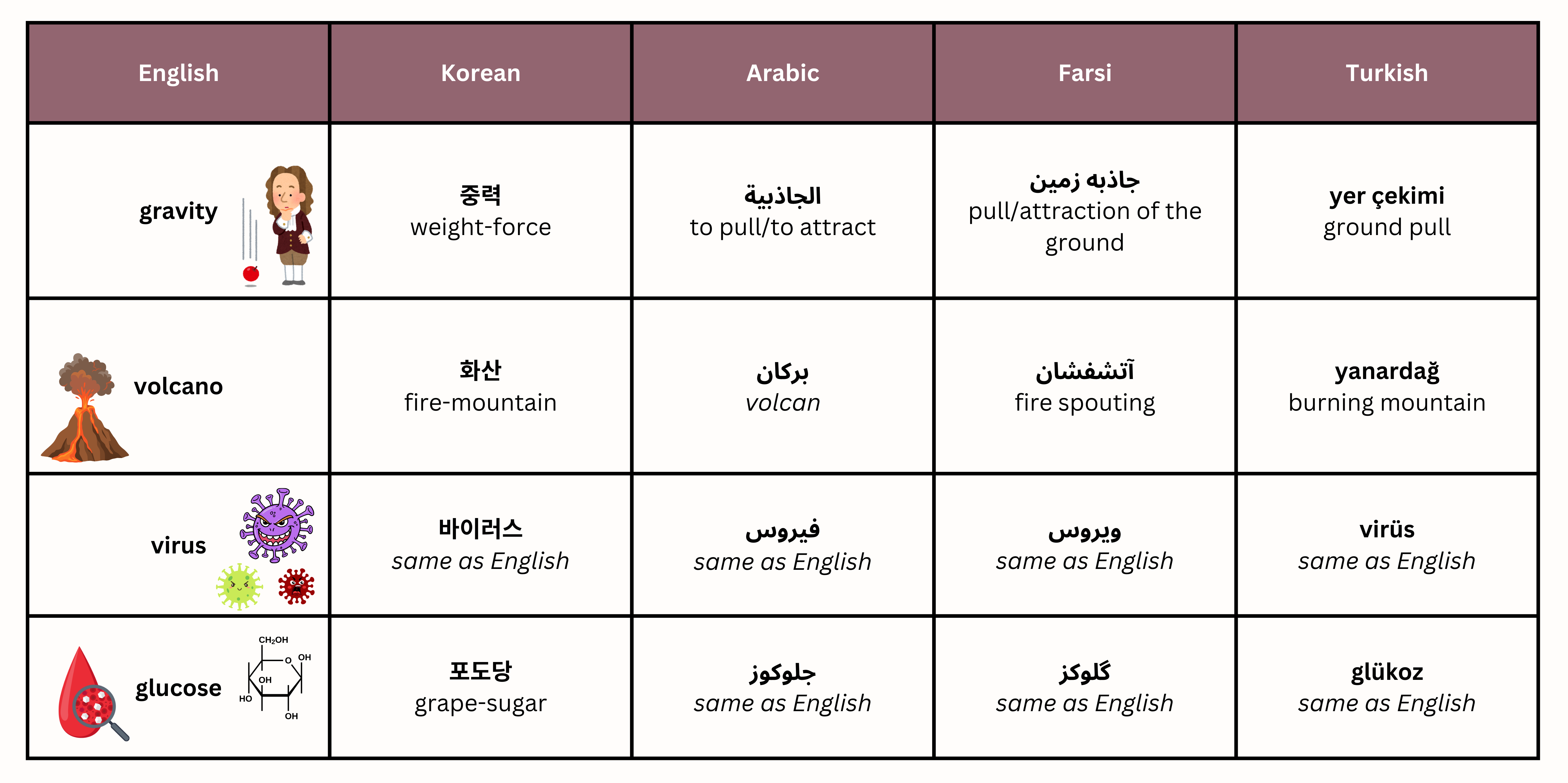
On this table, we can see scientific concepts commonly addressed in our classes, translated into English, Korean, Arabic, Persian, and Turkish. Each translation is accompanied by a detailed semantic explanation of the concept. For example, in Korean, the term “Gravity” is represented by two characters meaning “weight” and “force” respectively. Knowing this translation helps to better understand the concept itself. Similarly, in Arabic, the term includes the notion of attraction, which is essential to understanding gravity. These different languages thus help to better grasp the term, regardless of the students’ language.
This work allows for a deeper understanding of concepts through the study of their translations in other languages. A teacher with a class of students from diverse cultures can take advantage of this diversity by exploring these translations with them. Additionally, this work on the meaning of concepts can guide educators in adapting their explanations, ensuring that all students understand not only the terminology but also the underlying scientific concepts in a way that resonates with their linguistic and cultural contexts. This approach promotes a learning environment where students can more easily connect new scientific knowledge to their existing linguistic framework.
Can you do the same work with the concept of a volcano? What do you think? Implementation in the classroom: the teacher creates an online Excel document in which they list the concepts covered each week in the school’s language. Each student is invited to add their language in a column. Thus, a scientific dictionary of the class is created, with languages varying according to the students’ languages. If the student does not know the translation of the word in their language (which is likely since it is a new concept), they should be encouraged to look up the term and its translation online and discuss it with their parents or community. In this way, without taking up class time, the teacher encourages the student to invest in their learning while valuing their linguistic heritage. Thus, the time spent working on the concept extends far beyond the class time. The student may have the opportunity to discuss it in their language with their family or community, thereby deepening their understanding of the term on their own.
© 2024 ESCAPE Projects